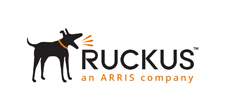Unified Communications, often abbreviated as UC, is the combination of different types of communication mediums including telephone service (VoIP), chat, video and web conferencing, messaging, email, fax, and other types of communications. Unified Communications systems can be sold and implemented with a select amount of individual communication mediums, or many integrated into a single unified system.
Unified communications consist of integrating various real-time and non-real time communication services into a convenient package for the user. With a unified communications solution, the user can receive a message through one communication medium and use another one to access it.
In today’s connected world, businesses are one of the main users of unified communications tools. There are numerous ways in which such a solution could be useful in a business context. A user might send an instant message to their coworker asking if a certain document is ready. The recipient of the message could then forward the relevant document by email.
Unified communications commonly combines both real-time and non real-time methods of getting in touch. Unified messaging is only used to combine messages received from several sources, such as voicemail, email and faxes, then holding these messages so that they can be accessed at a later time. On the other hand, unified communications would also include real-time communications, like telephony and video conferencing, which can be used from a variety of supported devices.
When using unified communications, various business communication channels are used together to form a complete communications solution. This doesn’t always mean that unified communications is a single product offered by a specific service provider. A business could use a landline telephony service from one provider, mobile phones from another and a publicly available or custom instant messaging service.
7Array, with its team of skilled professionals, looks into your business’ unique and specific requirements, accordingly proposes different Unified Communications suites, including individual UC components, as well as fully functional Unified Communications services.





© 2021. 7Array Solutions Pvt. Ltd. All rights reserved.
Design & developed by MEMORY